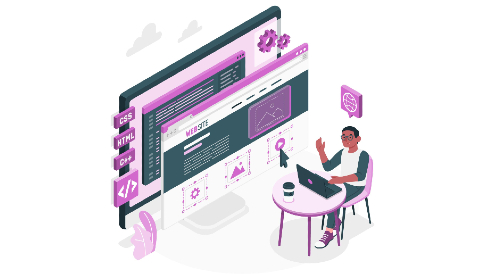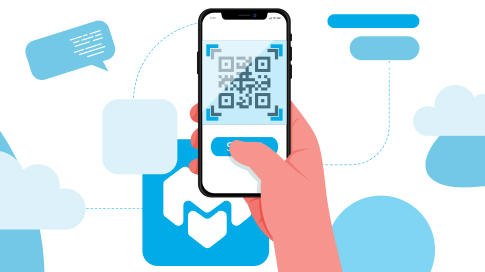7 Online Threats and How to Protect Yourself Against Them
If you have been paying attention to headlines over the last year, and especially some very recent ones, you will no doubt have noticed that living and working online can be a minefield. The increasing number of internet-connected devices, personal and business software, the rise of remote work, and the ability to extort and demand payments in untraceable cryptocurrencies make online security more precarious each year. Digital life is convenient and salutary in so many ways, but there are obvious downsides. Below are 7 online threats and how to protect yourself against them.
Browser Hijacking
Browser hijacking occurs when a small piece of software makes unsolicited changes to a user’s browser settings to place advertising into the browser, thus disrupting the user’s experience. Replacing an existing home or error page with the hacker’s own or replacing the search engine are some common results of browser hacking. The outcome for the user is a worse browsing experience and potential data theft. It can really only be combatted using a browser hijacker removal program.
These programs will disinfect your browser, help prevent fraud and improve performance of your browser. They are simple, fast, and often capable of getting rid of offending software in just one click.
Online Threats – Phishing
Phishing is where cyber criminals attempt to gain access to sensitive information not by exploiting internet protocol or software vulnerabilities but by tricking human beings into accidentally installing malicious software or giving away data. They usually work by taking the form of an email or other message from a trusted or ambiguous sender. A person is beguiled into opening the email, inside which there is typically a message that demands urgent action either involving clicking on a link that begins a download process or by responding to the email with personal or proprietary information.
The result may be keyword tracking software installed, which ends up collecting a trove of your login information or malware. It grants a thief access to your device, wherein they proceed to steal or encrypt your data.
In a corporate environment, phishing attacks can be deadly and far-reaching. The target could be persuaded to access sensitive information or reconfigure important applications, leading to many problems. Privileged Access Management (PAM) stops this from happening by giving system administrators greater control over who has access to what.
Ransomware
Whether because of a phishing attack or otherwise, ransomware has become a business and a national security threat. The potential for damage with ransomware attacks should be enough to give anyone pause, and, unfortunately, there is not much that can be done about them other than preemptive planning.
Take the attack that targeted the Colonial Pipeline in the United States in May 2021. A note on the company’s computer screens informed people that all of their data had been stolen and encrypted and the only way to get it back was to pay the extortionists $1.2 million. If the firm refused to pay, the hackers promised to publish all of the stolen data online so the company, having no other options, negotiated the ransom down to $850,000–the lesser of two evils (the other being bankruptcy).
DDoS
A DDoS, or denial of service attack, is one in which cybercriminals attempt to render a device or network service unavailable to users through the disruption of services. These are commonly deployed against individual websites wherein the perpetrators flood the website with browser requests, either manually with a group of people or using a program until the website’s server is overwhelmed and the site crashes. These attacks can mean considerable downtime for websites and large amounts of revenue lost.
There are different types of DDoS attacks, including volumetric attacks, application-layer attacks, and protocol attacks. To deal with DDoS attacks, you should first establish a denial of a service response plan that describes the steps you will take to mitigate the damage. The second should be to secure your network infrastructure beforehand to ensure you are fortified against these attacks. Most standard network equipment does not come with robust DDoS mitigation options, so depending on your risks and potential downsides, you might consider hiring more advanced protection on a pay-per-use basis.
Popular Online Threats – Worms
A worm is a type of standalone malware that propagates to spread itself and infect other devices on a network. It takes advantage of security failures on the target computer and, from there, scans and infects other devices on the web. Worms may act as vehicles for other malicious software, including malware, and defending against them should be part of any business’ disaster response planning. Worms are even more of a concern in our current era of remote work and increased network access from outside the office. To bolster defense against these threats, businesses can rely on advanced solutions like Analyst1 threat detection software, which utilize cutting-edge algorithms and real-time monitoring to proactively identify and mitigate worm infections, ensuring network security and safeguarding critical data.
Because worms exploit deficiencies in coding, one of the most essential best practices for securing yourself against them is to perform regular manual or automatic updates of your operating system. This makes sure any security patches are installed and your plan is up-to-date concerning the latest cybersecurity threats. Additionally, always be careful when opening links and attachments, especially from unknown senders. Never click or open anything you do not trust.
Man-in-the-middle Attacks
Man-in-the-middle attacks are essentially eavesdropping attempts whereby an attacker will disrupt a conversation or data transfer in the process, putting themselves in the “middle.” Then they proceed to act as though they are both participants, fooling each side of the transfer. These attacks are often used for espionage purposes to steal financial information or reroute financial transactions. Depending on the hacker’s intentions, damage can range from minor to catastrophic. Common attacks include email hijacking, IP spoofing, HTTPS spoofing, and Wi-Fi eavesdropping.
You can help prevent man-in-the-middle attacks by using a VPN to encrypt all your online communication, only visiting HTTPS-secured websites and staying up-to-date on current phishing scams. Combined, these will help mitigate your risk of falling victim to MitM attacks.
SQL Injections
Structured language query attacks are those which attempt to insert code into data-driven applications (i.e., web and other applications you use in your daily life) to command the application to do something. SQL is used by applications to communicate with databases, and while they are an essential part of app functioning. They are also used to send unauthorized commands to databases (to retrieve information etc.) that allow intruders to request information and data they do not have access.
You can protect yourself against SQL attacks by ensuring your plugins, applications, and any other software you use for personal or business reasons are constantly updated. Postponing and ignoring updates, especially anything explicitly advertised as a security update, is the fastest way to expose yourself to SQL attacks.
Possible Online Threats – Conclusion
Life online is fraught with pitfalls and threats. That is not fear-mongering. That’s just the way it is. The more we make our lives and commerce digital, the more opportunities there will be for cybercriminals to exploit vulnerabilities. The constant updating, downloading, and vigilance may seem onerous, but the alternative can be a personal or commercial catastrophe. Keep the above common cybersecurity threats in mind and, more importantly, how to fortify yourself against them, making it difficult for those looking to extort, exploit and steal online.




Leave a Reply